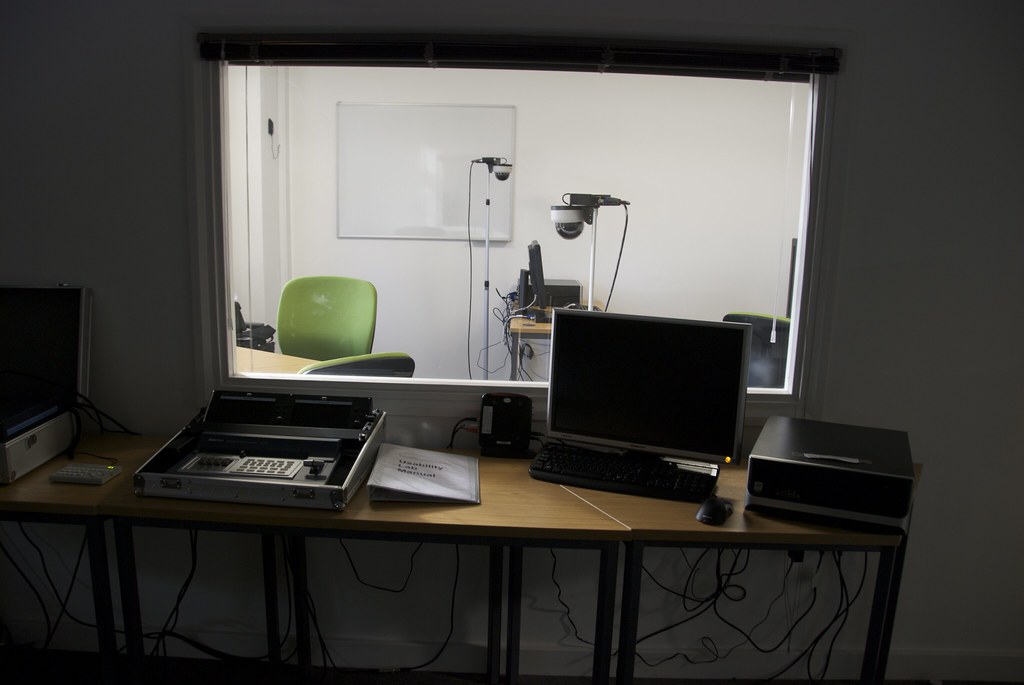HCI and Evaluation
Information Visualization
John Alexis Guerra Gómez | john.guerra[at]gmail.com | @duto_guerra
Andy Reagan | andy[at]andyreagan.com |@andyreagan
https://johnguerra.co/lectures/information_visualization_spring2021/12_Evaluation/
Andy Reagan | andy[at]andyreagan.com |@andyreagan
https://johnguerra.co/lectures/information_visualization_spring2021/12_Evaluation/
What We Are Going to Learn
- Human Computer Interaction
- Techniques for evaluation
- Controlled experiments
- Interviews
- Surveys
- Case studies
- Usability studies
- Running the usability study
- Choosing tasks
- Prioritization
- Likert scales
Evaluation
- Controlled experiments
- Natural settings
- Any setting not involving users (expert reviews)
Expert Reviews
- Design experts
- Visualization experts
- Usability experts
- Domain experts
Types of Expert Reviews
- Heuristic evaluation (golden rules)
- Guidelines review
- Consistency inspection
- Cognitive walkthrough
- Metaphors of human thinking
- Formal usability inspection (courtroom style)
- Accesibility inspection
Eight Golden Rules of Design
- Strive for consistency
- Cater for universal usability
- Offer informative feedback
- Design dialogs to yield closure
- Prevent errors
- Permit easy reversal of actions
- Support internal locus of control
- Reduce short-term memory load
Controlled Experiments
- Experiments in the lab
- Controlled confounding variables
- Measure one or more quantitative variables
- Usability testing
- Living labs
What to Measure?
- Time to learn
- Speed of performance
- Rate of errors
- Retention over time
- Subject satisfaction
Variables
- Independent variables (causes)
- Dependent variables (effect)
- Extraneous variables (that can affect the experiment)
Controlled Experiment example
Tasks and conditions

Controlling extraneous variables

Tasks

Results

Usability Testing
Usability Testing

Natural Settings Involving Users
- Observation
- Interviews
- Logging
Triangulation
Different researchers observe the same effect.
Interviews
- Unstructured
- Structured
- Semi-structured
- Focus group
- Telephone/online interviews
Questionnaire
Like interviews but without the researcher present
Likert Scales
Likert Scale
What do you think?
- Strongly disagree
- Disagree
- Okay
- Agree
- Strongly agree
More About Likert Scales
- Can be 3, 5, 7, or more responses
- Continuous or discrete
- Middle response is the balance
Likert Scales d3
https://blockbuilder.org/john-guerra/57d31bae7685139cecd731bba9f48090Likert Scales Vega-Lite
https://vega.github.io/vega-lite/examples/layer_likert.htmlLikert Scales Vega-L ite (cont.)
https://vega.github.io/vega-lite/examples/concat_layer_voyager_result.htmlOther Methods
Observation
- User's setting
- Can be direct or indirect
Direct Observation in the Field
Ethnography
Direct Observation in Controlled Environments
- Think aloud techniques
Direct Observation: Tracking Users
- Diaries
- Interaction logs and web analytics
MILCS
- Multi-dimensional
- In-depth
- Long-term
- Case studies
TreeVersity MILCS
- Thirteen different case studies with nine agencies
- TreeVersity 2: UMD Budget 2010 - 2012
Focus groups
One researcher, many attendees
Prototyping
- Low vs. high fidelity?
- Read data
- Build scenarios, tell a story
Quatitative evaluation
Analysis of Variance (ANOVA) for comparing the meansRunning a Usability Study
Validity Checks
- Earlier stages:
- Observe and interview target users (needs assessment)
- Design data abstraction/operation (data types, transformation, operations)
- Justify encoding/interaction design (design heuristics, perception research)
- Informal analysis/qualitative analysis of prototypes (task-based)
- Algorithm complexity analysis/evaluation
- Mid- and later stages:
- Qualitative analysis of system (task-based)
- Algorithm performance analysis
- Lab or crowdsourced user study
- Field study of the deployed system
Formal Usability Study
Goal: Does the visualization allow the user/analyst to perform key tasks?
Task-Oriented Visual Insights
- Basic insights:
- Read a value
- Identify extrema
- Characterize distribution
- Describe correlation
- Comparative insights:
- Compare values
- Compare extrema
- Compare distribution
- Compare correlation
Usability Study: Logistics
- You will need:
- Visualization with test data loaded
- Consent form (if required)
- Task list
- Protocol (study procedures and debrief questions)
- Surveys/interviews and any additional data-collection instruments
- Audio or video recorder, notepad
How Many People Do You Need?

"Lab" Doesn’t Need to Mean a Formal Lab
Software for Collecting Audio/Video
- Video of user
- Screencapture of user actions
- Audio of entire session
Online Tools
- Surveys
- Mouse tracking/navigation tracking
Prioritization
You’ve Collected Data
- Task completion
- Time on task
- Notes
- Interview responses
- Survey responses
- ...Then what?
What is the Analyst’s Information Scent?
MoSCoW Prioritization
- Must
- Should
- Could
- Won't
Severity Ratings
- Not a real problem
- Cosmetic
- Minor usability issue
- Major usability issue
- Critical issue
Limitations
- Ecological validity
- Are performance-oriented tasks the complete story?
Usability Study Demo
References
- Shneiderman, B. and Plaisant, C., 1987. Designing the user interface: Strategies for effective human-computer interaction
- Rogers, Y., Sharp, H., Preece, J. and Tepper, M., 2007. Interaction design: beyond human-computer interaction.
- Martin, D.W., 2007. Doing psychology experiments. Cengage Learning.
What We Learned
- Human Computer Interaction
- Techniques for evaluation
- Controlled experiments
- Interviews
- Surveys
- Case studies
- Usability studies
- Running the usability study
- Choosing tasks
- Prioritization
- Likert scales

